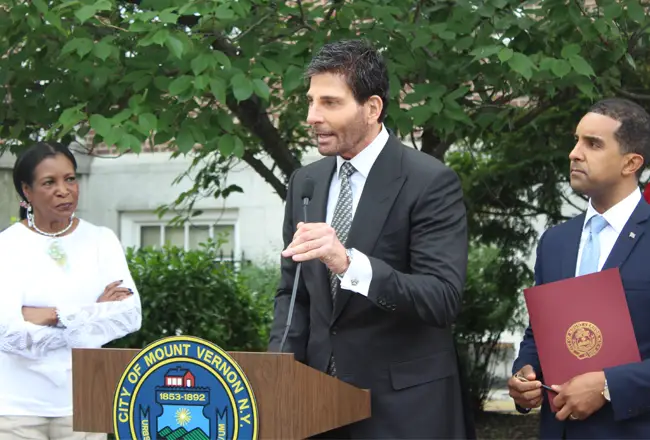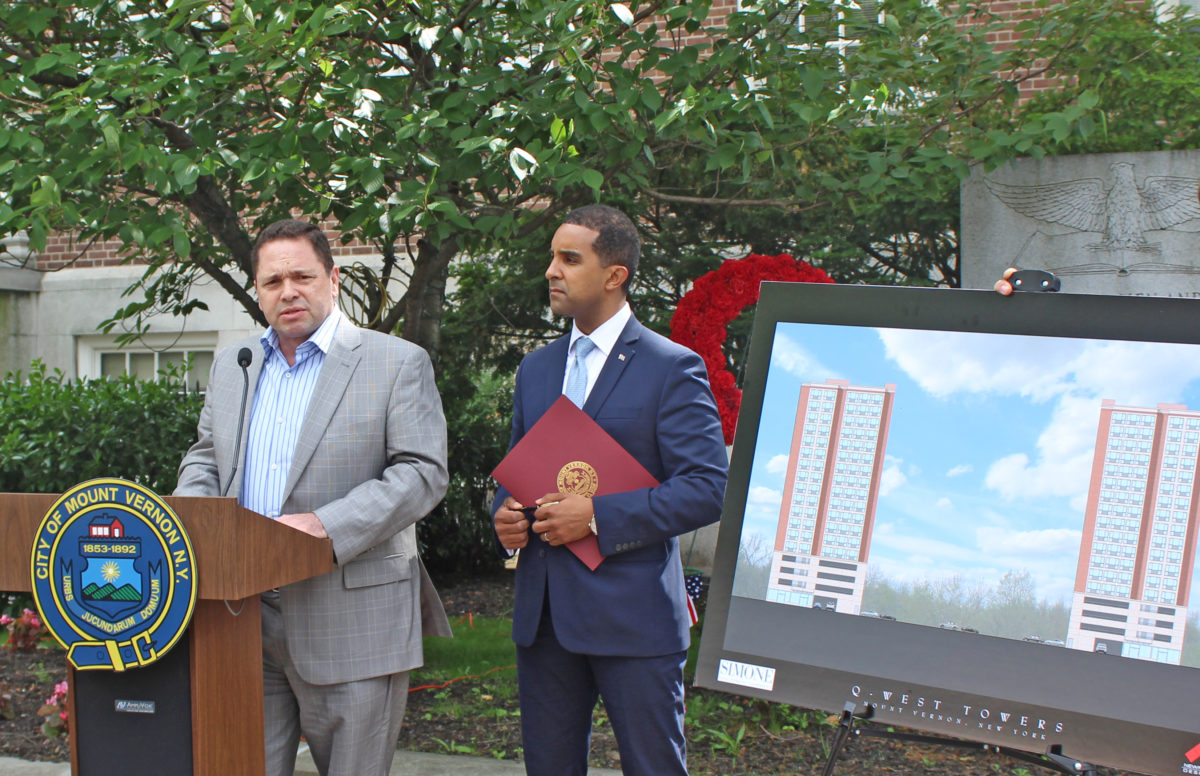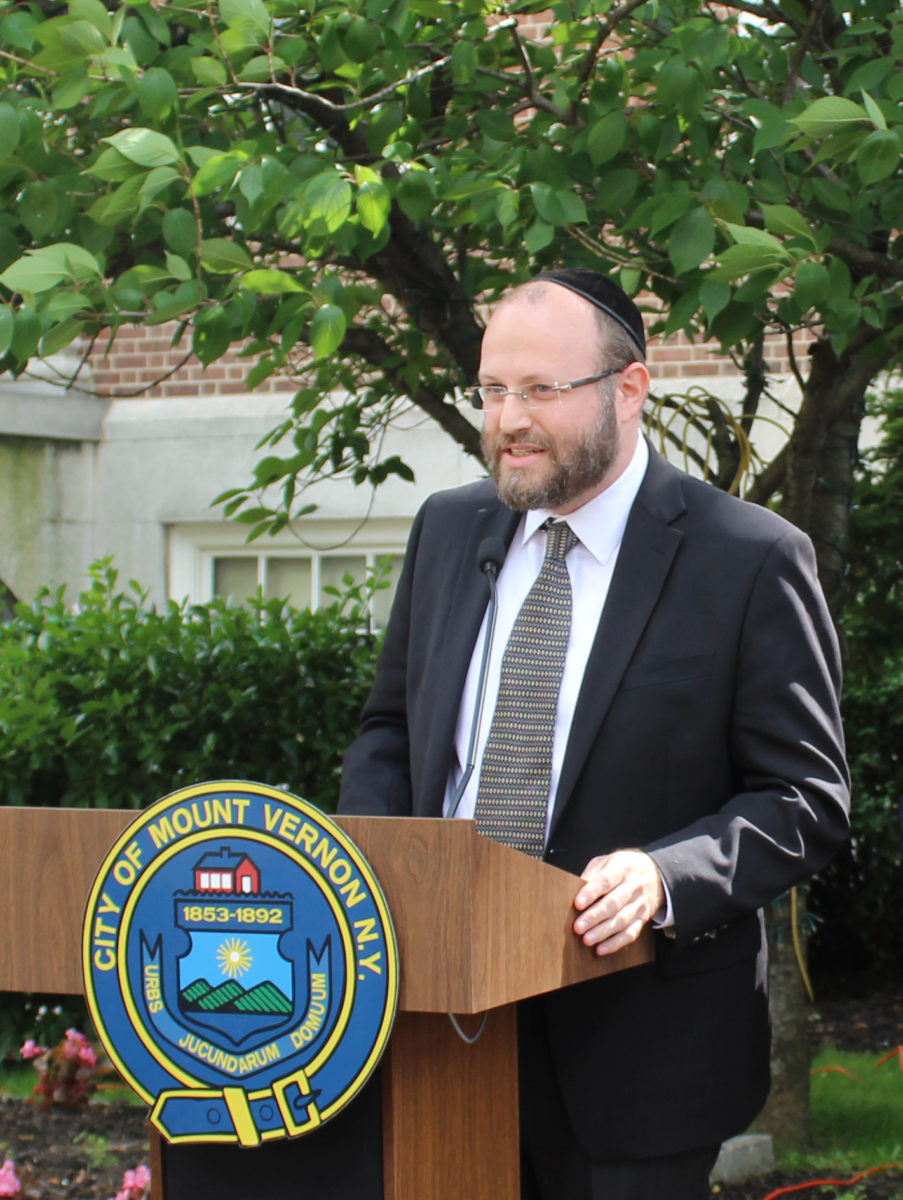Friday June 2nd was a day for dreams in Mount Vernon.
A half-dozen real estate developers pitched plans for projects. If every one of their ideas comes to fruition, a half-billion dollars in investments would create more than 1,200 dwellings.

Their ideas ranged from projects ready to break ground to concepts that are still aspirational, from low-income housing to luxury living, from maintenance of existing housing stock to transformational propositions.
About the only thing they had in common was the desire for financial assistance from the city.
And that”™s how developers”™ day began Friday morning at a meeting of the Mount Vernon Industrial Development Agency.
The first request was for a do-over.
Greater Centennial AME Zion Church operates 12 buildings and 158 apartments south of downtown. Built 40 years ago, they are some of the oldest low-income housing in the city.
Property taxes had already been abated, and in 2014 the developer borrowed $13.8 million to renovate the buildings.
No one thought about the payment in lieu of taxes agreement, so when the PILOT expired the property went back on the tax rolls at more than $1 million. Even after Centennial got taxes reduced by about $400,000, it was too much. The church projects a $219,960 deficit this year, growing to $422,800 by 2026.
Centennial asked the IDA for a new 30-year PILOT, beginning with a tax abatement of $411,500.
Nothing can be done for the current tax year, IDA officials said, and they held out only vague hope of a remedy.
The rest of the day was more upbeat.

MVP Realty Associates LLC has proposed The Pointe, a $105 million plan to build 210 affordable housing units and retail space at South Fourth Avenue and East Third Street near Mount Vernon East train station.
Once upon a time, Mayor Richard Thomas said, Fourth Avenue was a destination where people strolled and shopped.
“Hundreds of jobs have been lost,” he said. “That”™s a high crime area. Now it”™s mostly shut down.”
As with many housing developments, MVP is looking for financing from a range of government sources: New York State Housing Finance Agency, low-income housing tax credits, city urban renewal money, Community Development Block Grants, state brownfield credits, Federal Home Loan Bank Funds and more.
Matthew Gross of MVP said he hopes to break ground for the first phase, a 110-unit building, next summer.
MVP submitted a preliminary IDA application for a 30-year PILOT with a $6.7 million tax abatement, a $3.6 million sales tax exemption and a $625,268 mortgage tax exemption.

“Now you”™re taking steps to resurrect a dead economy,” Thomas said. “This is a starting point.”
Enclave Equities of Purchase is close to breaking ground on a cluster of five low-rise buildings with 179 market-rate apartments on MacQuesten Boulevard.
Demolition of two dilapidated warehouses has begun near Metro-North Railroad”™s Fleetwood station. Financing for the $47.9 million project has been lined up. The company has pledged to use as many local contractors and construction workers as possible. Construction can begin this summer.
Enclave has all the approvals it needs, but one. Without tax abatement, company official Sam Mermelstein said, the project can”™t work.
The company is asking for a PILOT for 25 to 30 years, beginning at $184,260, and sales tax and mortgage recording tax exemptions.
The IDA approved a resolution to start the process by a 4-0 vote.
After the IDA business concluded, developers”™ day continued with an afternoon pep rally outside of City Hall.
The mayor introduced David J. Gentner, president of the Wartburg retirement community, the city”™s largest landowner with 34 acres, its largest employer and, at more than 150 years of operation, one of its oldest institutions.

About 7,000 retirees live within five miles of the campus near the Pelham border. About 5,000 have incomes of $100,000 or more. Wartburg wants to shift the balance of its residential portfolio toward market-rate units.
It plans to invest about $65 million on 100 to 150 apartments and it hopes to partner with a developer by the end of the year.
Alexander Development Group and The Bluestone Organization are ready to build 42 Broad St., a $90 million, 16-story, 249-unit tower near the Fleetwood train station. The project had been delayed by legal challenges. Now the partners are within weeks of closing on financing.
The residential tower is billed as a luxury project with all market-rate rentals. Mark Alexander, company principal, compared the location with Riverdale.
“It”™s a fabulous community,” he said.
Simone Development Cos. wants to build two 70-unit, 18-story buildings cattycorner to Mount Vernon West train station. The $60 million project would be aimed at middle-income renters.
“If you are a fireman, policeman or city worker,” Simone partner L”™Judie Simmons said, “these buildings are for you.”
Company President Joseph Simone said he hopes to get all city approvals by the end of the year.
“I have a true love of Mount Vernon,” said Simone, whose family moved from the Bronx to the Fleetwood neighborhood when he was a child. “And I”™d like to see it flourish again.”
Carlton A. Brown of Direct Investment Development envisions a $125 million project at 20 South 2nd Ave.
“What I like about Mount Vernon is that it”™s a community that is under-invested,” Brown said. “All of our work is in communities that have been written off, but have underlying value.”
He said he looks for ways to transform lives, especially the lives of children, by transforming neighborhoods. For example, about 100 of the 320 Library Square apartments would be set aside for the “creative class,” artists, dancers, musicians.
“That”™s a class that makes a community different.”


















When is enough enough? Asking for tax abatements or PILOT agreements for low income housing is one thing. Asking for it on market rate or luxury apartments is not a good idea. It is a form of corporate welfare, asking the people to offset taxes so they can pocket it as profits. Without the tax breaks either they or someone else will invest the money. With market rate or luxury housing comes many other costs including infrastructure costs and maintenance. It is the property tax that helps pay for it. How many small businesses get the same tax breaks? Taxpayers should not be subsidizing any business venture where they don’t also share in the benefits. Don’t say jobs because that is a bogus argument. Most of the so-called job creation is temporary whereas the benefits to the developer are long-term. I do not have exact figures but the amount of tax breaks collectively will likely exceed $15 million over the 25-30 years. The amount of job creation will never reach this level. PILOT agreements rarely benefit taxpayers. Don’t take my word for it, simply look at these agreements over time.